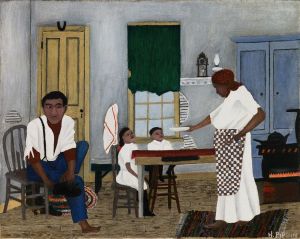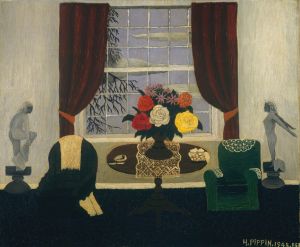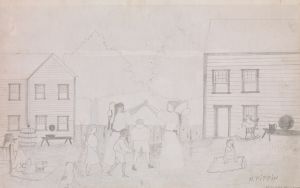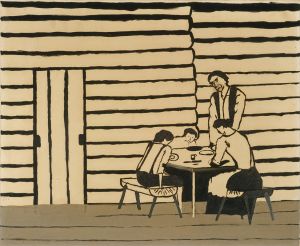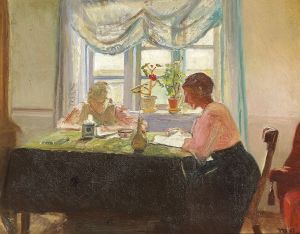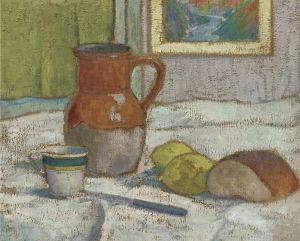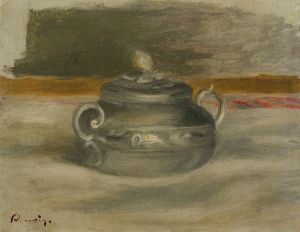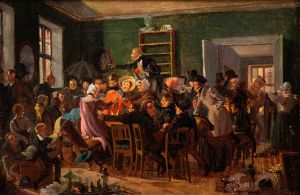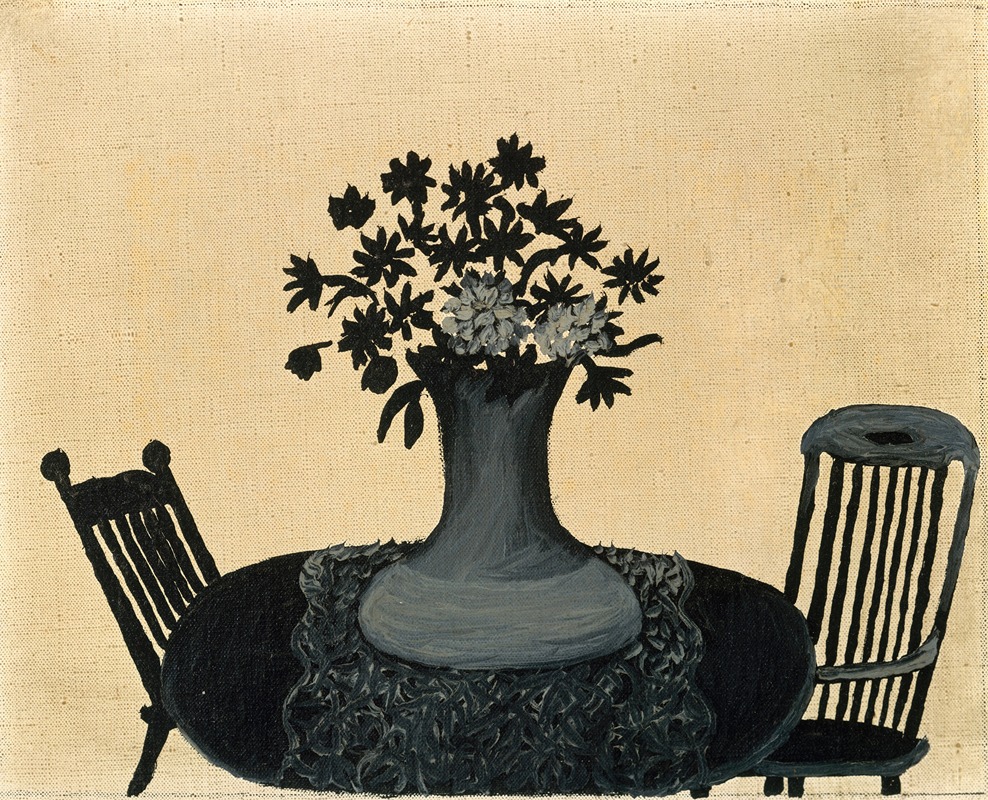
Table and Two Chairs
A hand-painted replica of Horace Pippin’s masterpiece Table and Two Chairs, meticulously crafted by professional artists to capture the true essence of the original. Each piece is created with museum-quality canvas and rare mineral pigments, carefully painted by experienced artists with delicate brushstrokes and rich, layered colors to perfectly recreate the texture of the original artwork. Unlike machine-printed reproductions, this hand-painted version brings the painting to life, infused with the artist’s emotions and skill in every stroke. Whether for personal collection or home decoration, it instantly elevates the artistic atmosphere of any space.
Horace Pippin's "Table and Two Chairs" is a notable work by the self-taught African American artist, who is celebrated for his poignant and expressive paintings that often reflect his personal experiences and social commentary. Pippin, born in 1888 in West Chester, Pennsylvania, began painting in earnest after serving in World War I, where he sustained a debilitating injury to his right arm. Despite this, he developed a unique method to continue painting, using his left hand to guide his right.
"Table and Two Chairs" is emblematic of Pippin's style, which often features strong, clear lines and a vibrant use of color. His works frequently depict domestic interiors, historical scenes, and everyday life, infused with a sense of narrative and emotion. This particular painting, like many of Pippin's works, is characterized by its simplicity and directness, yet it conveys a deeper sense of intimacy and reflection.
The painting presents a straightforward composition: a table flanked by two chairs. Pippin's use of perspective and spatial arrangement invites viewers to consider the relationships between the objects, as well as the potential stories they might tell. The objects are rendered with a meticulous attention to detail, a hallmark of Pippin's work, which often imbues ordinary scenes with a sense of significance and dignity.
Pippin's work is often noted for its exploration of themes related to race, identity, and history. Although "Table and Two Chairs" does not explicitly address these themes, it can be seen as part of his broader oeuvre that reflects on the African American experience. Pippin's paintings frequently incorporate elements of his own life and the world around him, offering a window into the cultural and social milieu of his time.
Throughout his career, Pippin gained recognition for his distinctive artistic voice. His work was exhibited widely during his lifetime, and he received acclaim from both critics and the public. Pippin's paintings are now held in numerous prestigious collections, including the Museum of Modern Art in New York and the Philadelphia Museum of Art, affirming his place in the canon of American art.
"Table and Two Chairs" exemplifies Pippin's ability to transform simple, everyday scenes into compelling works of art that resonate with viewers. His paintings continue to be studied and appreciated for their artistic merit and their contribution to the narrative of American art history. Pippin's legacy endures as a testament to his resilience and creativity, and his work remains an important part of discussions about art, culture, and history in the United States.







